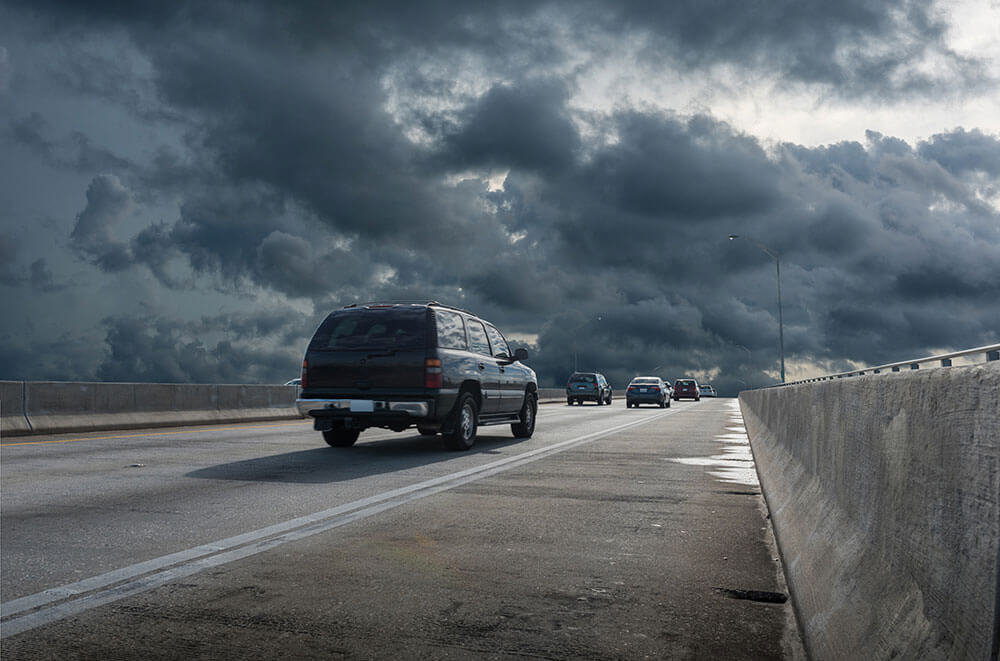PLAN NOW TO EVACUATE A RUINED CITY AND EVADE A CATASTROPHE
Post-World War II Los Angeles was an economic boomtown and a target for nuclear annihilation by the Soviets. The population of Los Angeles in 1950 was nearly two million people with double that living in the expansive county that stretched some 50 miles across.
To evacuate that many people, the infant freeway system could only rely on three narrow highways out of town. To alleviate this, it was decided that the best method was to construct a series of roads over the San Gabriel Mountains to the Mojave Desert beyond.
The people of Los Angeles, in the event that they must evacuate ahead of some impending doom, were left to rely on themselves. A real-world example of this fate happened in Houston in 2005. Hurricane Rita struck just weeks after Hurricane Katrina pummeled New Orleans.
The then-mayor of Houston, Bill White, called for an evacuation of the entire city. Highways were choked with traffic, fights between motorists broke out, people died from hyperthermia in the intense heat, and 23 nursing home patients were killed as a bus evacuating them caught fire and exploded near Dallas.
Because of this, mayors and other officials rarely order evacuations, despite the dangers the population will face. However, even if no order is given, you may decide that it is better for your family’s safety to remove yourselves to the safety and solitude of some out-of-the-way location. In that case, you’d better be ready to evacuate.
BEFORE YOU LEAVE
As it has been shown in history, evacuation announcements come at a moment’s notice, and having your gear ready means you’ll be that much ahead of the crowds already choking the roads out of town.
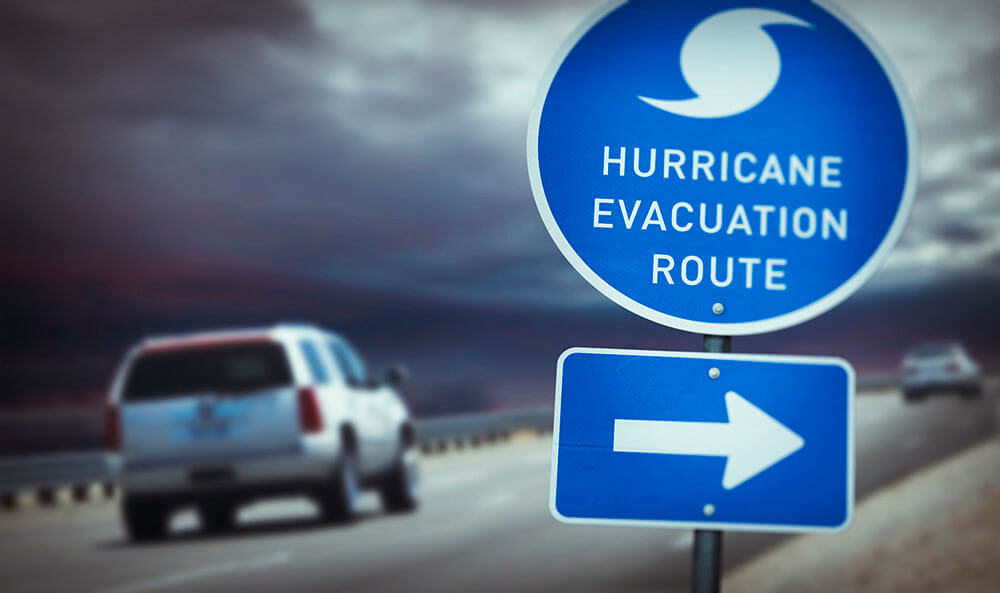
Go Vehicle
Since you might have to go at a moment’s notice, you’ll want to make sure your chosen bug-out vehicle is gassed up and kept well-maintained. Gas stations might be closed. Service will be limited, the streets crowded with cars.
At the bare minimum, keep a host of needed gear in your car at all times. It means that there will be less you’ll need to gather up on the day you’re forced to leave, and you’ll be just that much more prepared for an emergency when you are away from home on a daily basis.
Gear
Consider your environment, climate, time of year, type of emergency, and intended destination when putting together your gear that is supposed to keep you comfortable for a few days to a few weeks.
The most efficient list to pack with is the 10 Essentials made popular by the Sierra Club and the Boy Scouts in the 1970s. Having redundant gear represented from all 10 categories will ensure that you’ll be well-prepared for most anything on the road.
“CONSIDER YOUR ENVIRONMENT, CLIMATE, TIME OF YEAR, TYPE OF EMERGENCY, AND INTENDED DESTINATION WHEN PUTTING TOGETHER YOUR GEAR…”
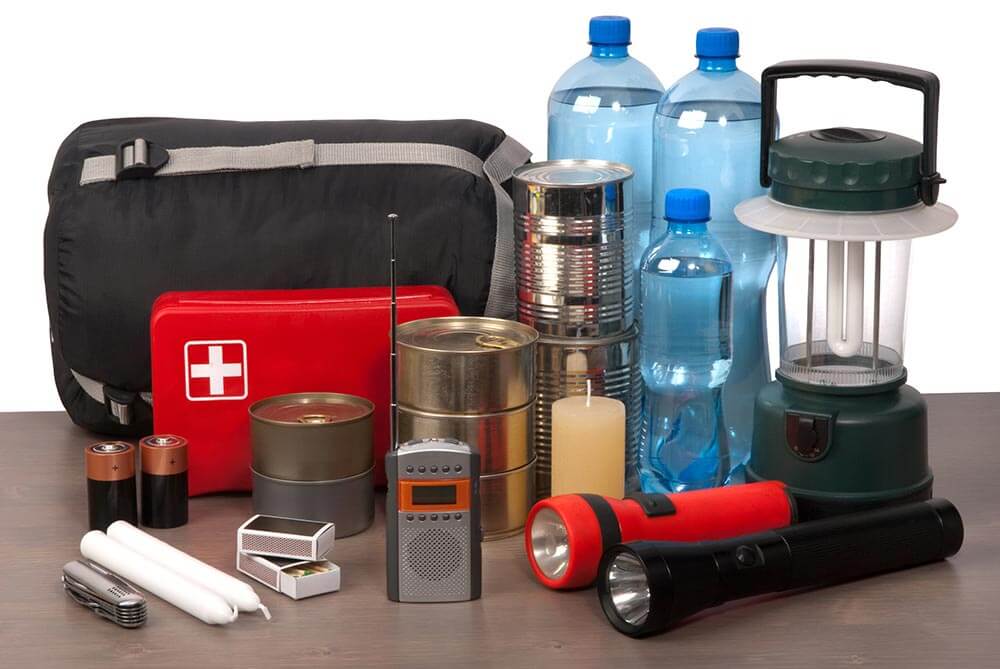
It is important to pack well but don’t over pack. Food and water is the most important, but if it is summer and you’re headed away from the city and into a desert, for example, extra blankets and warmer clothes might not be necessary and will only take up valuable space.
Keep your gear in readily accessible boxes or totes near where your car is parked (and have a carry option like a backpack in case you can’t take your car).
Extra Items to Include
In addition to the 10 essentials, consider including the following:
- Extra cash (assume ATMs won’t work)
- Prescription medications, vitamins, and other medicinal supplies (diabetic, allergies, etc.)
- Personal hygiene items
- Important personal documents (stored in a waterproof container) such as birth, death, and marriage certificates, insurance policies, deeds, and bank account records
- Gear and food for your pets
Exit Plan
Every city is different. Some have many different evacuation directions, while others will be more limited. Make an exit plan based on your location, population and intended destination. Avoid going toward the city center.
Keep with you detailed paper maps of your area (as cell service will likely not be available) and have marked your primary route. In addition to highway and local road maps, take with you topographical maps, and forest service maps for your area. Know your routes intimately.
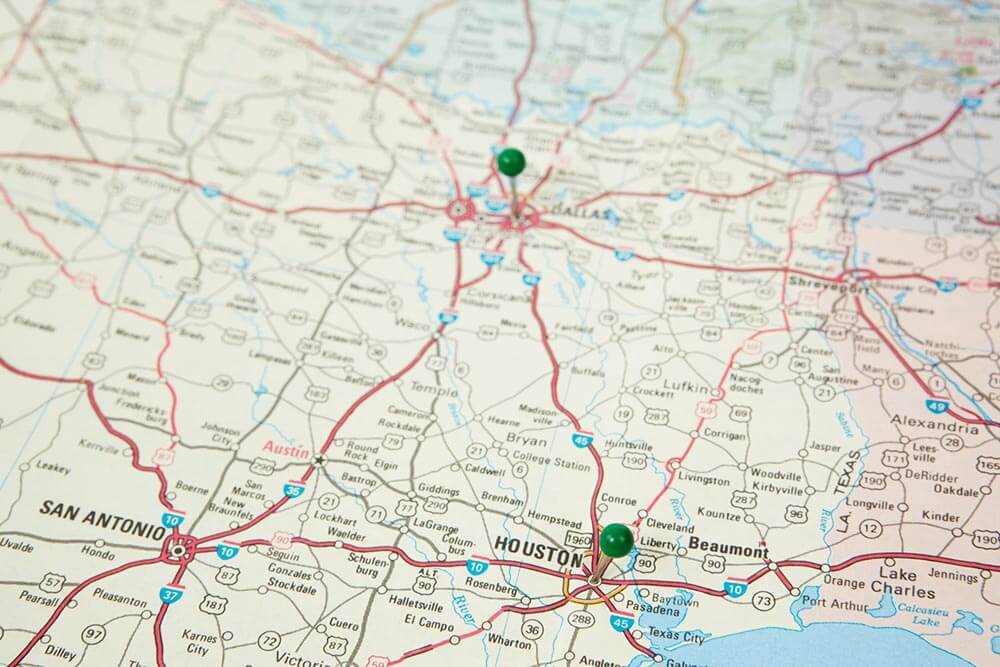
Though you should follow the advice and directions of governmental officials during an evacuation as they are probably more informed than you are about the situation, be prepared to go your own way if it means the difference between life and death and safety or danger. A small dynamo-powered radio should be part of your cache to keep you abreast of the latest news.
Exit Plans B Through Z
Whatever your plan, whatever your primary goals are, plan for failure. Plan for the main highway to be jammed. Plan for the secondary roads to be washed out or congested. Plan to take a tertiary road, an alternate route, a “secret” series of side streets that might not be as crowded as the main roads.
As you develop your plan, think of all the items you might need along the way. What’s important here is to consider what you’ll need if your plan falls apart for some reason and you have to switch to Plan B…or
Plan C. If your vehicle breaks down, did you plan to bring the tools, training, and parts to fix it? If not, you’ll have to figure out another way.
Make sure you plan on what to take in every case, overlap your requirements for each case, and decide what would make sense to take. You can’t take everything or plan for everything, but you can maximize your chances if you plan effectively.
PRACTICE YOUR BUG-OUT PLANS
Putting your bug-out plans into action may be as simple as driving your intended route(s) and being observant of what happens along the way, how long it takes you to travel your primary and backup routes, and if there are any issues. Do it during rush hour to get a feel for what kind of traffic you can expect.

Note on your maps areas to avoid (bad neighborhoods, those without proper services) and areas to aim for (remote friends, military bases, hospitals, etc.). On your map and route, are there choke points where traffic can bottleneck? Do you cross any rivers or streams that might swell and flood the road? Are there sources for fuel, water, food, and will those sources be available in abundance if you need them?
E-DAY: EXODUS DAY
Leaving your home with the prospects of may be never seeing it again is a difficult thing to do, but don’t leave like you’re abandoning it; leave like you’re going on vacation.
Pack your gear in a closed garage so nobody sees and leave like you’re just going out for a while. If there is a fear of flooding, cut the power to your house at the breaker, but if not, leave a couple of lights on to dissuade looters. Of course, close and lock all windows and doors.
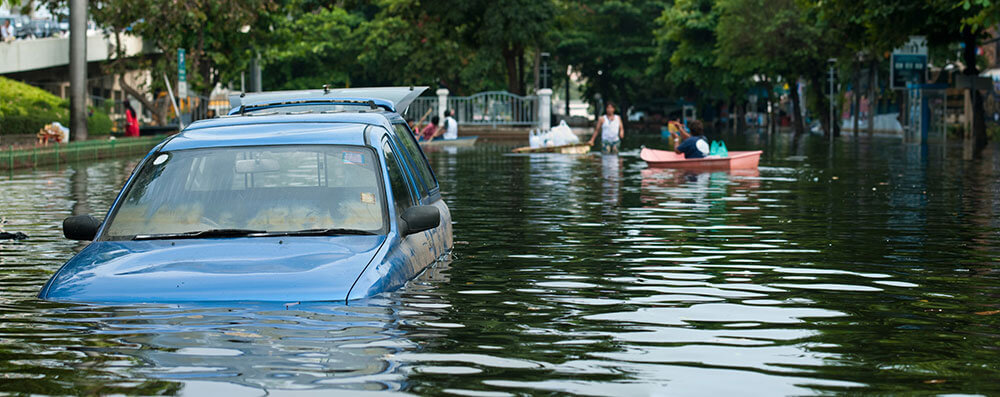
GDAGYS / ISTOCK PHOTO
Once you’ve left, put your evacuation plan into play and stick with the routes you have laid out in your preparation phase. Stay extra vigilant for unforeseen dangers like riot zones, road hazards (downed powerlines), washed-out bridges, and excess traffic.
The idea is to escape the city as quickly as possible, so you may have to rely on your secondary or tertiary plans. Most important, don’t stop. It’ll sound callous, but you need to look out for yourself and your family—you’ve packed your gear and planned your escape for your group. Know that people during emergencies should not be trusted.
HOW LONG SHOULD YOU STAY AWAY?
This, of course, is an unanswerable question. Your length of time out of the city and away from your home is dependent on many factors, and the first and foremost is safety. Is it safe to go home? Is whatever the reason that caused you to leave over? Another concern is the aftermath. Is your home even still standing? Is there a reason to go home to an empty lot or a pile of rubble?
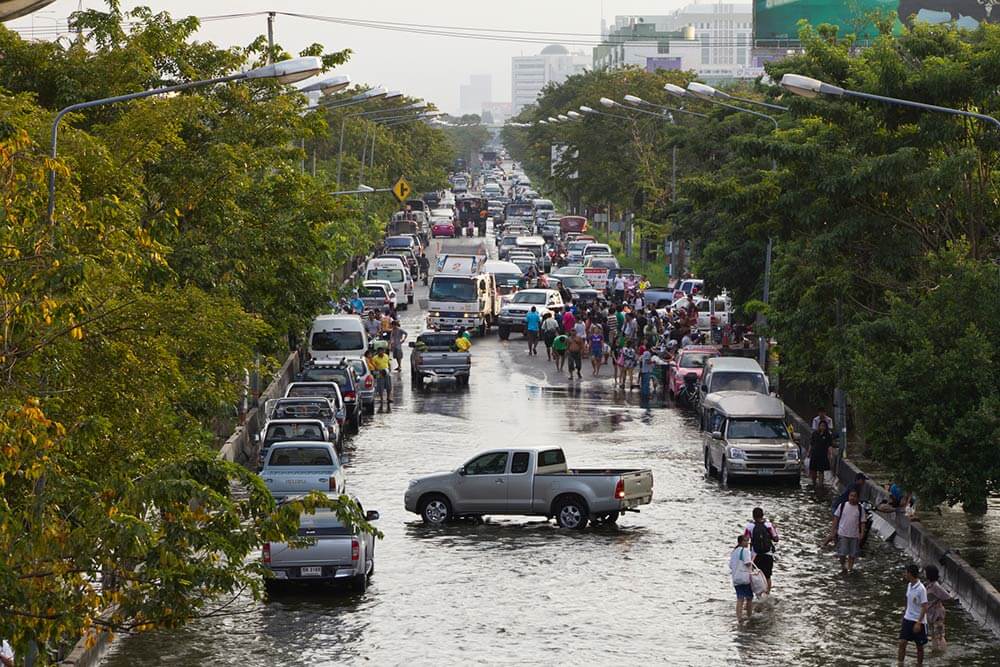
Whatever forces compelled you to stay away, be prepared for those to continue for the duration of your absence. You escaped possible death and destruction for a very good reason. Don’t go home too early and unprepared and face additional dangers.
ESSENTIALS CHECKLIST
The Sierra Club provides these lists of essential items to have for emergency preparedness:
10 Essentials: The Classic List
- Map
- Compass
- Sunglasses and sunscreen
- Extra clothing
- Headlamp or flashlight
- First-aid supplies
- Firestarter
- Matches
- Knife
- Extra food
10 Essentials: Freedom 9 Systems
- Navigation: Map, altimeter, compass, GPS device, PLB or satellite communicators, extra batteries or battery pack
- Headlamp: Plus extra batteries
- Sun Protection: Sunglasses, sun-protective clothes, and sunscreen
- First Aid: Including foot care and insect repellent (if required)
- Knife: Plus repair kit
- Fire: Matches, lighter and tinder, or stove as appropriate
- Shelter: Carried at all times (can be light emergency bivy)
- Extra Food: Beyond minimum expectation
- Extra Water: Beyond minimum expectation, or the means to purify
- Extra Clothes: Beyond minimum expectation
NEW RESOURCE FOR URBAN PREPPERS
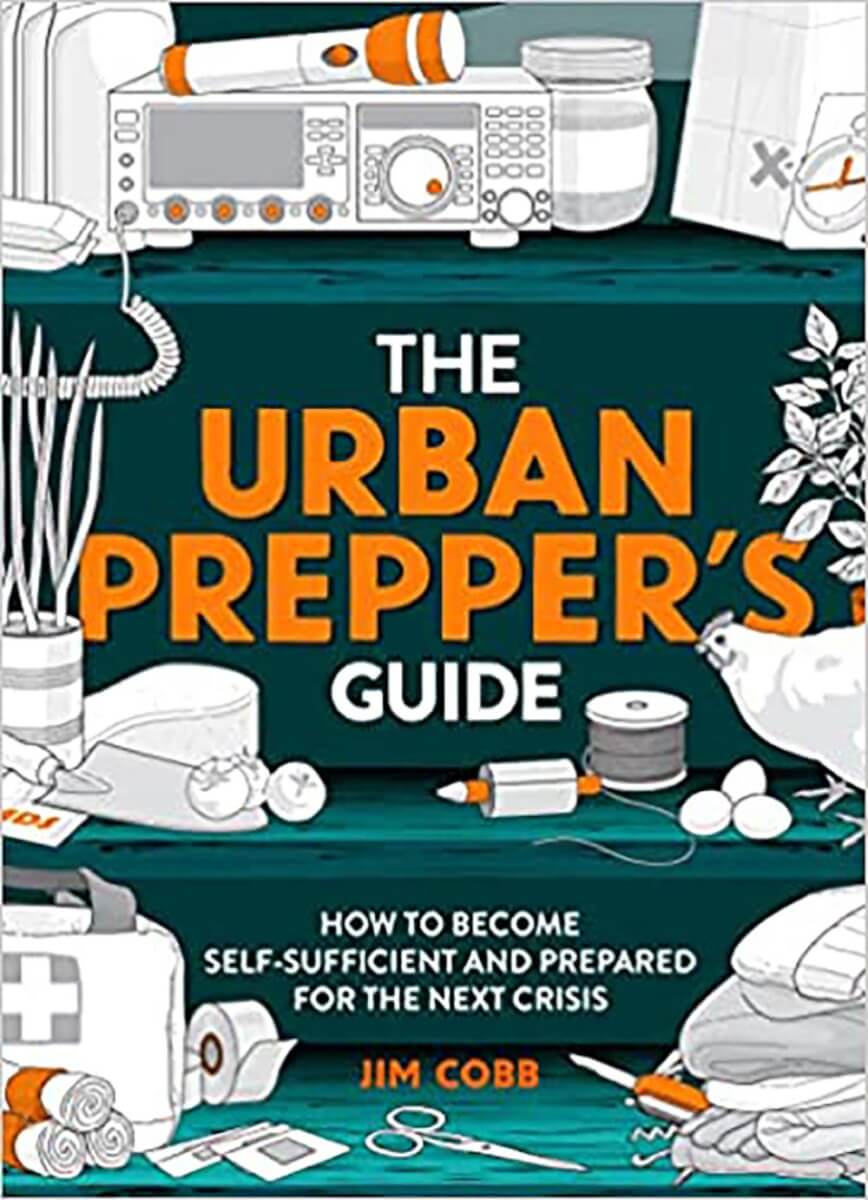
Should you stay or should you go? And how will you prepare to stay safe in an emergency either way? Jim Cobb just might have some answers for you. Cobb is a widely recognized expert on emergency preparedness and he is a regular contributor to AOG Boundless.
He’s just penned a new book, The Urban Prepper’s Guide, which will be published at the end of August, but it’s available through pre-order now on Amazon.com. This 224-page guide is available flexibound in print for $15.95 or in digital form for Kindle for $8.49.
A version of this article first appeared in the July 2022 issue of American Outdoor Guide Boundless.


